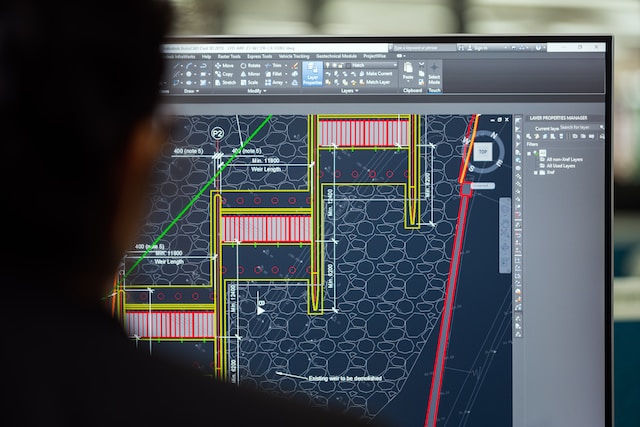
Engineering projects are often complex proposals with heavy barriers and tight budgets or times, where it’s necessary to juggle staff schedules and always have an eye on logistics and progress. What are the best practices for engineering project management?
Defining the scope and objectives, the first step
Few cost overruns are more significant than changing the project during its execution. Sometimes there’s no other way, though, because new information may emerge during execution that was not available in the definition and scope phase, and the project must be re-evaluated and redefined.
That said, before starting any project, it is advisable to have as clear and concise a vision of what you want to achieve as possible, including requirements, limitations, risks, and expectations. This phase has to be defined beforehand to get to work with the drafting of a technical report.
Detailed project plan through a technical report
Technical reports are mandatory documents that reflect how a project will be executed in times and costs in detail. If the definition and scope are a strategic outline, this document is a highly defined, detailed operational reflection, such as using BIM.
Within this technical project, there are sections without which management cannot move forward, such as the schedule and organizational chart, the budget, a matrix of responsibilities, the communication plan, a quality, risk, sustainability plan…
It helps quite a bit to have alternative plans and flexibility within this report, perhaps by means of appendices with substitute actions depending on certain conditions. For example, having several partition designs and choosing the most convenient one depending on the time.
Communication, a basic part of engineering projects
 Image by Randy Fath at Unsplash
Image by Randy Fath at Unsplash
When thinking about engineering from outside the field, big machines, material flows, and complex technologies come to mind. And yet, this discipline rests much more on people’s ability to communicate than is usually imagined. Without communication, engineering doesn’t get beyond paper.
Every project requires designating the person responsible for external and internal communication, as well as assigning specific roles to the leaders of the technical teams to manage their entry and exit from the project. There are meetings to be held, different companies to be coordinated, and minutes to be published.
Forming a team and encouraging collaboration
The worker teams are not just a list of names arranged alphabetically but a complex mixture of life experiences, personal achievements and goals, age differences, and interests. Sometimes there is friction, with differences of opinion arising from different abilities and competencies.
Managing engineering projects requires (appropriately enough) team building. The objectives (even if they are temporary) of the workers, managers, contractors, and other parties involved must all be working in the same direction. The project’s direction. Conflict prevention and resolution and staff motivation are essential management skills.
Risk prevention and management
Due to their nature, many engineering projects carry significant risk arising from hazards such as high voltages, heavy weights, or falls. These may be aggravated by exposure and minimized by reducing vulnerability and maximizing safety (gloves, traffic-free zones, guardrails).
Occupational risk prevention is a fundamental aspect of managing engineering projects, not only to anticipate possible risks but also to respond quickly, directly, and concisely to any eventuality. The project will need experts with the ability to act.
However, the most common risks we face are not for people but are operational: deliveries that don’t arrive, unforeseen staff replacements, adverse weather… Dealing with risk is inherently complex because it is often unpredictable.
 Image by ThisisEngineering RAEng at at Unsplash
Image by ThisisEngineering RAEng at at Unsplash
This means that good engineering project management requires people who know how to deal with uncertainty and deal with contingencies that arise mid-morning on any given Tuesday and paralyze high-cost projects. Knowing how to channel the workforce to alternate tasks is an example of how to manage chaos.
Monitoring the project, continuous control
Monitoring the degree of the project’s fulfillment is a basic part of project engineering. It is necessary to monitor the progress over time at all times and compare it with the schedule to calibrate when necessary. And as you can imagine, it is almost always necessary.
All projects experience delays of different types associated with causes that often cannot be predicted, such as a rise in the price of a material, a stock break, a license not being presented on time, etc. The use of monitoring and control tools is a recommended practice to ensure the project’s success.
The final assessment: how to learn from past mistakes
When a project ends, it is essential to look back on the progress made, identify mistakes to translate them into lessons learned, and evaluate the points that were most critical. The only way to improve in the next project is to learn from all the previous failures.
The next step is to evaluate the performance, assess how the planned deadlines were adjusted to the final ones, the price divergence from when it was projected until it was completed, the adequacy of the methodology, and the quality of the works obtained.
This short list shows just some of the practices for managing engineering projects where, of course, many more skills, actions, and practices play a part. Aspects such as knowing more languages, tracking budgets, coordinating several companies, or understanding license requests are also important in the wide world of engineering projects.





There are no comments yet